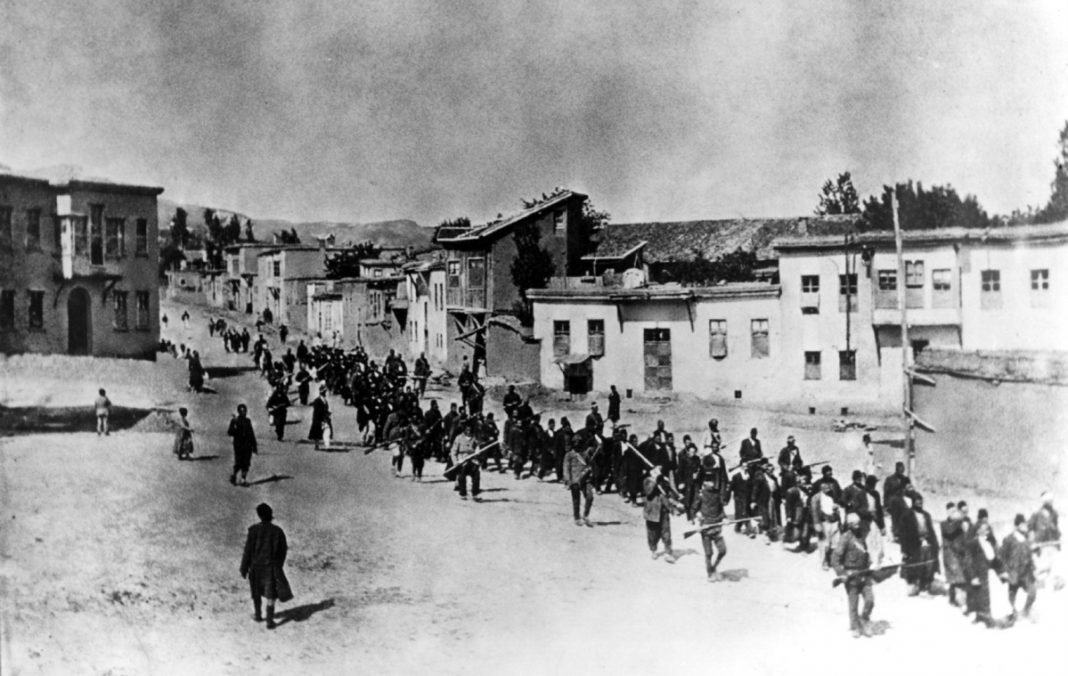*FILE PHOTO* Email sent from: "Colbourn, Glen" gcolbourn@thestar.ca Subject: Emailing: TURKEY_GENOCIDE Date: 9 April, 2015 4:18:51 PM EDT *FILE PHOTO*(NYT22) KHARPERT, Armenia -- March 8, 2009 -- TURKEY-GENOCIDE -- Ottoman Armenians are marched to a prison in Kharpert, Armenia by armed Turkish soldiers in April 1915. About 972,000 Armenians disappeared from population records in 1915 and 1916. For Turkey, the number should have been a bombshell. According to a long-hidden record that belonged to the interior minister of the Ottoman Empire, 972,000 Ottoman Armenians disappeared from official population records from 1915 through 1917. In Turkey, any discussion of what happened to the Ottoman Armenians can bring a storm of public outrage. But since its publication in a book in January, the number -- and its Ottoman source -- has gone virtually unmentioned. "Nothing," said Murat Bardakci, the book's author. The silence can mean only one thing, he said. "My numbers are too high for ordinary people. Maybe people aren't ready to talk about it yet." (Project Save via The New York Times)*EDITORIAL USE ONLY* *FILE PHOTO*(NYT22) KHARPERT, Armenia -- March 8, 2009 -- TURKEY-GENOCIDE -- Ottoman Armenians are marched to a prison in Kharpert, Armenia by armed Turkish soldiers in April 1915. About 972,000 Armenians disappeared from population records in 1915 and 1916. For Turkey, the number should have been a bombshell. According to a long-hidden record that belonged to the interior minister of the Ottoman Empire, 972,000 Ottoman Armenians disappeared from official population records from 1915 through 1917. In Turkey, any discussion of what happened to the Ottoman Armenians can bring a storm of public outrage. But since its publication in a book in January, the number -- and its Ottoman source -- has gone virtually unmentioned. "Nothing," said Murat Bardakci, the book's author. The silence can mean only one thing, he said. "My numbers are too high for ordinary people. Maybe peop استمرار تطهير ةاضطهاد المسيحيين: يوم ذكرى الإبادة الجماعية الأرمنية ريمون إبراهيم/ من موقع معهد جايتستون/ 24 نيسان 2023 (ترجمة من الإنكليزية بواسطة موقع غوغل) Christians Continue to be Purged: Armenian Genocide Remembrance Day Raymond Ibrahim/Gatestone Institute/April 24, 2023 استمرار تطهير المسيحيين: يوم ذكرى الإبادة الجماعية الأرمنية ريمون إبراهيم/ معهد جاتستون/ 24 أبريل 2023 (ترجمة من الإنكليزية بواسطة موقع غوغل)


